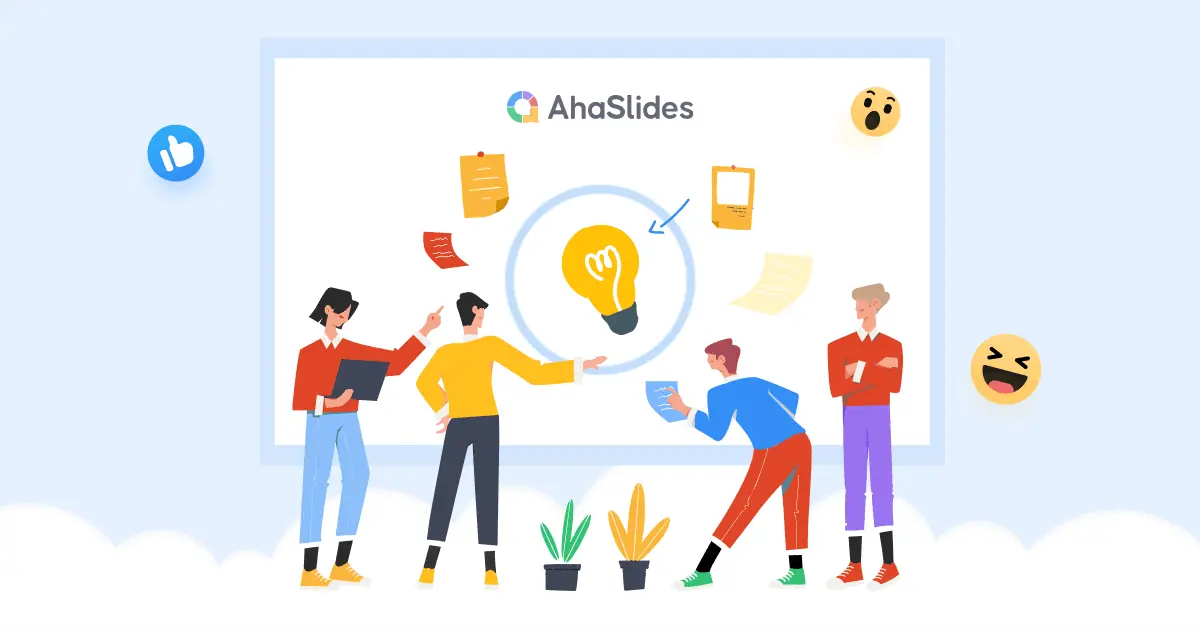Ĉu nova pri reta instruado? La avantaĝoj kaj malavantaĝoj de e-lernado povas esti iomete neklara unue.
Tamen, kun niaj klasĉambroj kaj nia mondo ĉiam pli malproksima, neniam estis pli bona tempo por lerni la kio, kial kaj kiel de cifereca edukado.
Jen estas ampleksa listo de 20 avantaĝoj kaj malavantaĝoj de e-lernado en viva virtuala klasĉambro, same kiel 4 senpagaj iloj tio povas helpi viajn klasojn partoprenigi pli forajn studentojn!
Via Gvidilo pri La Avantaĝoj kaj Malavantaĝoj de E-Lernado
- La 12 Avantaĝoj de E-Lernado
- La 8 Trompoj de E-Lernado
- 4 Senpagaj Iloj por la Viva Virtuala Klasĉambro
La 12 Avantaĝoj de E-Lernado
1 Fleksebleco
Ni komencu per la evidenta, ĉu ne?
La kapablo lerni de absolute ie ajn, sen la bezono veturi, probable estas unu el la plej grandaj avantaĝoj de e-lernado.
Ĝi estas absoluta savŝnuro por studentoj kiuj…
- Vivi en zonoj remotas.
- Devas atingi publika transporto al lernejo.
- Devus esti pli proksime al hejmo por kuracaj aŭ aliaj kialoj.
Kaj ne nur pri geografia fleksebleco ni parolas ĉi tie. Fleksebleco en tempo signifas, ke instruistoj kun sufiĉa aŭtoritato pri siaj propraj klashoraroj povas aranĝi siajn retajn kursojn laŭ la vivoj de siaj studentoj.
Se estas bela tago ekstere, kaj vi estas unu el tiuj 'malvarmeta' instruistoj, viaj studentoj eble havas neniun problemon postdatigi la klason por la vespero.
2. Grandega Akcelo al Sendependaj Kapabloj

La fakto, ke grupa laboro ne estas tiel simpla en fora lernado, ne nepre estas malbona afero. Ĝi pli emfazas sendependan laboron, kiu poste en la vivo probable formiĝos la plimulto de la laboro, kiun lernantoj faras.
Fakte, tio estas aparte utila se vi instruas mezlernejajn (mezlernejajn) studentojn. Pli da sola laboro bone preparas ilin por universitato, kie oni plejparte atendos, ke ili laboru sendepende.
Kompreneble, nenio el ĉi tio signifas, ke grupa laboro estas tute ekster la tablo. Plej multaj videovokaj programoj permesas elĉambroj, kie studentoj povas plenumi grupan laboron en aparta videovoko antaŭ ol realiĝi al la ĉefa.
3. Preparado por Malproksima Estonteco
El ĉiuj avantaĝoj kaj malavantaĝoj de e-lernado, ĉi tiu probable havos la plej grandan longdaŭran efikon sur la labora estonteco de viaj studentoj.
Ni ĉiuj scias, ke ni iras al fora laboro estonteco, sed la statistikoj diras, ke ĝi eble alvenos pli frue ol vi pensus:
- Antaŭ 2025 ĉirkaŭ 70% de la usona laborantaro funkcios malproksime dum almenaŭ 1 laborsemajno monate.
- Post la pandemio de Koronaviruso, la nombro de konstantaj malproksimaj laboristoj en 2021 atendas duobliĝas de 16.4% ĝis 34.4%.
Ni verŝajne ne bezonas kristalan globon por vidi, ke estas granda kvanto da Zoom-telefonado en la estonteco de viaj studentoj. Instrui ilin per ĉi tiu kapablo nun eble ne ŝajnas kapablo, sed konateco kun interretaj videotelefonadoj certe estos tre utila por ili poste.
4. Vojo Pli Interaga
La malĝoja vero pri la moderna lerneja sistemo estas, ke ĝi tute ne estas moderna. Ni ankoraŭ plejparte instruas niajn lernantojn per la sama unudirekta informrubejo, kia ni estis en la viktoria epoko.
E-lernado donas al ni ŝancon ĵetu la skripton.
La interretaj interagaj iloj haveblaj en 2021 ebligas al instruistoj vere engaĝigi siajn studentojn per dudirekta kaj grupa diskuto. Jen kelkaj manieroj impliki studentojn kun tre malmulte da preparo...
- Q&A – Orda demando-responda sesio, kie studentoj povas anonime (aŭ ne) demandi al la instruisto demandojn pri la temo. Ĉi tiuj demando-respondaj sesioj povas esti konservitaj por reviziti ilin poste.
- Vivaj voĉdonoj – Plurelektaj demandoj faritaj en reala tempo, pri kiuj studentoj voĉdonas de hejme. Tio povas esti uzata por kolekti opiniojn aŭ testi komprenon pri temo.
- Cerbumado – Malfermaj demandoj kaj vortaj nuboj permesu al viaj studentoj libere proponi siajn ideojn kaj diskuti pri tiuj de aliaj.
- Demandoj – Tre amuza, poent-bazita metodo por testi komprenon teame aŭ sole estas viva kvizoEn iuj programoj, la respondoj de ĉiu studento al la kvizo povas esti ligitaj al analiza raporto.

Levu voĉojn, levu la manojn.
Rigardu ĉi tiun 12-slidean engaĝiĝan ŝablonon ĉe AhaSlides. Enketoj, ideointerŝanĝoj, kvizoj kaj ludoj - neniu elŝuto necesas, 100% senpaga!
5. Uzi Retajn Dokumentojn estas Vaste Supera

Kiel ni diris, edukado ne estas la sola afero, kiu fariĝis interreta en 2020. Kunlabora interreta programaro, kiel Miro, Trello kaj Figma, vere plibonigis sian ludon ĉe la jarŝanĝo.
Por instruistoj, unu el la plej grandaj avantaĝoj al retlernado en la lastaj jaroj estis Google Drive. Senpage, ĝi permesas al ili krei kaj dividi dokumentojn kaj dosierujojn, spuri hejmtaskon kaj kunlabori kun aliaj instruistoj pri materialoj por studentoj.
Por studentoj, havi aliron al komunaj dosierujoj signifas, ke ĉio jam estas perfekte organizita por ili. Ili povas lasi komentojn pri io ajn, kion ili ne komprenas, kaj ricevi respondojn de la instruisto aŭ kunstudantoj.
6. Super Verda
Jen unu el la avantaĝoj kaj malavantaĝoj de e-lernado kun la potencialo por grandega efiko sur la estonteco de viaj studentoj.
Ŝanĝi al interreta lernado signifas ŝanĝi de elspezanta energio en fizika lernejo. Lumoj, gaso, ekipaĵo, ktp., ĉio estas ŝparita energio! Kaj kompreneble, meza lernejo povas ŝpari laŭvorte milionojn da litroj da fuelo ĉiujare por transportado de lernantoj kaj instruistoj.
Kompreneble, ekzistas multaj pozitivaj kromefikoj por tio. Krom profitigi ĉies estontecon, vi verŝajne sentos sufiĉe bonan profiton en via propra monujo.
7. Facila Organizi kaj Resumi
En la senreta modelo, lecionoj estas nur tre mallongaj eksplodoj de informoj, kiuj devas batali kontraŭ la ĉiutagaj distraĵoj de kreskanta studento. Ofte malfacilas por studento memori ion, kion ili lernis nur hieraŭ.
Interrete, ĉi tio estas multe malpli da problemo. Studentoj povas aliri antaŭajn informojn multe, multe pli facile:
- Demandoj - Skriba kunsido de demandoj kaj respondoj signifas, ke ĉiuj demandoj faritaj en leciono estas registritaj.
- Registradaj sesioj – Viva video-programaro permesas vin registri vian lecionon kaj dividi la tuton, aŭ elektitajn partojn de ĝi, kun viaj lernantoj.
- Kunhavigitaj dosierujoj – Ĉiuj studentoj povas aliri protokolojn pri demandoj kaj respondoj, videoregistraĵojn, dokumentojn, materialojn kaj multe pli el komunaj interretaj dosierujoj.
En e-lernado ĉio estas konstanta. Ne estas unufojaj lecionoj, diskutoj aŭ voĉdonoj; ĉio, kion vi instruas aŭ diskutas kun viaj lernantoj, povas esti gravurita, dokumentita kaj vokis kiam ajn informoj devas esti revizititaj.
8. Multa Superrigardo
Vi eble supozas, ke estas facile por infanoj mallaboremi, kiam la sola afero, kiu tenas ilin ligitaj al sia lernado, estas fotilo.
Nu, kiam gepatroj same laboras dehejme, estas multe pli da instigo por studentoj resti temigis ilian lernadon.
Nature, te technologyniko ankaŭ estas tie por plenigi la malplenojn. Estas pluraj pecoj de libera programaro vidi la komputilajn ekranojn de la studentoj, preni kontrolon de ili kaj ŝlosi la ekranon de la studento se ili rifuzas kunlabori.
9. Pandemia-Pruvo
Vi verŝajne jam mem eltrovis ĉi tion: e-lernado estos la plej bona maniero daŭrigi edukadon kiam la sekva pandemio trafos.
Dum Coronavirus estis iomete senorda testado por e-lernado, ni povas supozi, ke instruistoj kaj studentoj estos multe pli bone preparita venontfoje. Kiam ĝi okazas, registaroj kaj lernejoj povas financi kaj adopti e-lernajn procedojn por certigi, ke lernado estas seninterrompa.
Estos malpli da trejnado kaj studentoj pasigos malpli da tempo alkutimiĝante al la ŝanĝoj.
La alternativo, plena 2 jaroj ekster lernejo, ne eltenas pensi pri ĝi.
10. Sennoma Partopreno
Kiel instruistoj, ni ĉiuj scivolis kiel instigi la timemajn infanojn paroli pipe.
La realo estas, ke la studentoj, kiuj hezitas paroli antaŭ klaso, multe pli multe kontribuas se ili povas fari tion anonime.
Multe da interaga edteknologia softvaro permesas al studentoj respondi kaj starigi demandojn anonime, kaj ankaŭ eniri diskutojn sen timo de embaraso. Fari ĉi tion ne nur helpas ilin lerni, sed ĝi konstante konstruas valoran konfidon se farite kaj laŭdata plurfoje.
11. Elŝuteblaj Lecionaj Planoj
Memoru, ke ĉi tiuj multaj avantaĝoj kaj malavantaĝoj de e-lernado ne nur efikas sur la studentojn, ili ankaŭ efikas sur la instruiston.
Averaĝe semajne, instruistoj elspezas 12-14 horojn de sia propra tempo fari lecionajn planojn kaj marki. Sed, nova teknologio lasas instruistojn preni grandegaj elĉerpu ĉi tiun preparan tempon.
Nun, vastaj bibliotekoj de lecionaj planoj, diskutaj temoj, taksoj kaj kvizoj, faritaj kaj dividitaj de kolegaj instruistoj, estas senprokraste elŝutebla pri edutech-programaro.
⭐ Ĉu vi volas pecon de tiu ŝparema tempo? Ni havas bonegan senpagan ŝablonon sube.
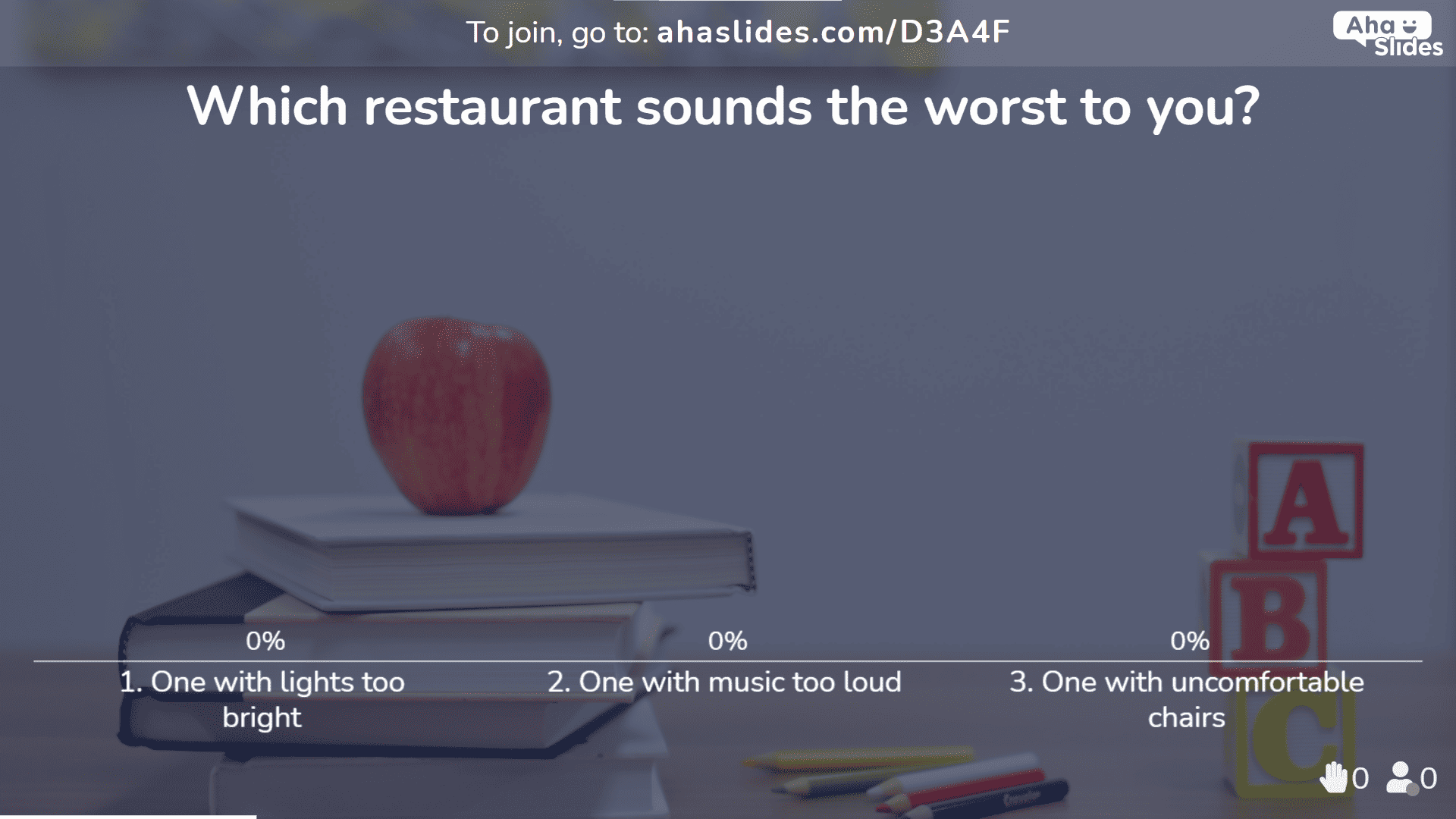
Senpaga Ŝablono
Lernstila Takso
Malkovru la lernstilojn de viaj studentoj per ĉi tiu 25-demanda enketo pri lernstiloj.
Provu ĝin senpage!
Por uzi ĉi tiun ŝablonon:
- Alklaku la butonon supre por vidi la ŝablonon.
- Redaktu ĉion, kion vi ŝatas pri la ŝablono (demandoj, koloroj, bildoj, ktp.)
- Dividu ĝin kun viaj studentoj per la unika ĉambra kodo. Ili povas respondi al ĉiuj demandoj kaj diskutoj (ĉu vivaj, ĉu ne vivaj) uzante siajn inteligentajn telefonojn.
⭐ Psst, alklaku ĉi tie por lerni pli pri kiel uzi la lernado de stila takso ŝablono.
12. Organizita Analitiko
Haltigu nin se vi jam aŭdis ĉi tion antaŭe: ekzamenoj estas malproksime de la plej bona maniero taksi la rezultojn de viaj studentoj.
Kohera pritakso tra la jaro estas pli efika kaj tre preferata de plej multaj studentoj al unufoja streĉa ekzameno fine.
Analizaj iloj por edukado kaj teknologio helpas instruistojn mezuri la rendimenton de studentoj en ĉiu kvizo, kiun ili faras. Jen kion ili malkaŝas kaj kiel ili povas esti grandega avantaĝo por interreta lernado:
- Entutaj rezultoj (procento de studentoj, kiuj respondis ĝuste).
- Plej malfacilaj demandoj (malkaŝas la demandojn kun la malplej ĝustaj respondoj).
- Agado de ĉiu studento en la kvizo.
- Prezento-raporto por ĉiu studento kompare kun iliaj antaŭaj prezentoj.
Analitikoj estas elŝuteblaj en ampleksa kalkultabelo. Tabeloj estas super organizita kaj facile serĉebla, kiu estas tre bonvena malproksimiĝo de dikaj studentaj dosierujoj disverŝitaj per paperaj taksoj.
Pli bone cerbumi kun AhaSlides
- Viva Vorta Nuba Generatoro | N-ro 1 Senpaga Kreinto de Vortaj Aretoj en 2024
- 14 Plej bonaj Iloj por Cerbumado ĉe Lernejo kaj Laboro en 2024
- Ideestraro | Senpaga Interreta Cerboŝtorma Ilo
La 8 Trompoj de E-Lernado
1. Engaĝiĝo ne facilas

El ĉiuj avantaĝoj kaj malavantaĝoj de e-lernado, ĉi tio probable estas la plej ofta komento, kiun ni aŭdas.
Se vi jam instruis rete antaŭe, vi renkontiĝis kun muro de silentaj studentaj vizaĝoj. Neniu estas engaĝita, kaj jen verŝajne kial:
- La studentoj ankoraŭ kutimiĝas al nekonata medio.
- La studentoj sentas sin tro ekspoziciitaj, havante sian vizaĝon sur ekrano, por ke ĉiuj vidu ilin.
- La lernantoj estas malatentigitaj de aferoj hejme.
- La studentoj ne havas la ŝancon labori en grupoj.
- La studentoj kutimas aktivajn lecionojn.
- La instruisto ne scias kiel modifi sian kutiman aliron por akomodi retajn lernantojn.
- La programaro, kiun studentoj uzas, estas tro konfuza aŭ ne estis klarigita al ili ĝuste.
Kiel Ripari ĝin…
Vere, povus esti multaj kialoj, kial viaj studentoj luktas por trovi la fokuson necesan por via interreta leciono. Kiel instruisto, via tasko estas liberigi ĉi tiujn obstaklojn per lecionoj so alloga, ke viaj studentoj ne povas deturni la rigardon.
Krei allogajn retajn lecionojn ne estas facila afero, sed jen kelkaj rapidaj konsiloj por tuj uzi:
- Uzu vivan interaga programaro (kun vivaj enketoj, kvizoj, kaj ĉiuj bonaj aferoj, pri kiuj ni parolis supre).
- uzo glacirompilaj agadoj en lecionoj por trankviligi fruan streĉon. (Ni havas tutan amason da ideoj tie ĉi!)
- uzo elĉambroj en via video-programaro por interŝanĝi inter sola kaj grupa laboro.
2. Ne Ĉiuj havas la Teknikon
Simple dirite, vi ne povas atendi, ke ĉiuj viaj studentoj havu la necesan teknologion por partopreni en interretaj klasoj. Kelkaj el ili eble devenas de malfavorataj familioj kaj eble ne havas la rimedojn disponeblajn por tekokomputilo, deca interreta konekto aŭ pagebla programaro.
Kune kun tio, multaj studentoj malpli talentas teknologion ol aliaj. Eĉ kun la te techniko, kaj eĉ kun gvidado, ili eble luktos por eltrovi kiel uzi ĝin.
Kiel Ripari ĝin…
Se vi havas la povon fari tion, la plej bona maniero ripari ĉi tiun amasan retlernan malavantaĝon estas provi nesinkrona lernadoTio estas lernado per fiksitaj materialoj, kiujn oni povas aliri iam ajn dum la tago sen bezono de vivi virtuala klasĉambro.
Tiel, studentoj povas partopreni en reta lernado kiam ajn kaj kie ajn eblas. Ili povas uzi komputilojn en bibliotekoj aŭ domoj de amikoj por enprofundiĝi en siajn studojn sen esti malhelpitaj de la manko de teknologio en sia propra domo.
3. Teknikaj Aferoj
Ni ĉiuj, iam en niaj vivoj, estis en situacio, kie antaŭe perfekta teknologio seniluziigis nin ĉe la precizaj momento, ke ni bezonas ĝin.
"Frustriĝo" ne tute sufiĉas, kaj "apopleza kolero" estas io, kion vi evidente neniam devus montri antaŭ viaj studentoj.
Teknikaj aferoj okazas, bedaŭrinde. Ili povas detrui virtualajn klasĉambrojn, ekstermante la konstruan fluon de la leciono kaj kondukante al studentoj fariĝantaj interrompaj aŭ tute neinteresitaj.
Kiel Ripari ĝin…
Vi neniam povas antaŭdiri te issuenikan problemon, sed vi ĉiam povas prepari vin eviti la problemon:
- Testo! Ŝajnas evidenta, ĉu ne? Tamen estas multaj instruistoj, kiuj uzas novajn programojn sen antaŭe rigardi ĝin ĝisfunde. Provu ĉiun funkcion, kiun vi planas uzi dufoje aŭ 3 fojojn.
- Rezerva! Eĉ post provado, iu tute nova kolerega problemo povas ekesti el nenio. Trovu programon, kiu donas similan servon al via unua elekto kaj faru ĝin via dua elekto.
4. Pli malfacile Kontroli la Klason
Ni menciis antaŭe, ke unu e-lernada profesiulo estas, ke la kvanto de superrigardo, kiun studentoj ricevas, efektive pliiĝas interrete. Tamen, kvankam disponeblas iloj pri administrado de klasĉambro, ili nur lasas vin trakti individue malbonkondutajn studentojn.
Se vi havas klasan tumulton, povas esti malfacile scii kion fari.
Kiel Ripari ĝin…
Ne ekzistas universala solvo por ĉi tio. Jen nur kelkaj manieroj, kiel vi povas alproksimiĝi al viaj virtualaj lecionoj por minimumigu la riskon de miskonduto:
- Ŝanĝu la reguloj klare ĉe la komenco de via kurso, aŭ eĉ la komenco de ĉiu leciono.
- Maksimumigi la studenta interago en via klaso: kaj instruisto al studento kaj studento al studento.
- Konservu aferojn diversaj – stagna, teda leciono estas bredejo por malbonkonduto.
5. Unu-kontraŭ-unu Instruado povas Suferi

Sendepende de kiu, kion aŭ kiel vi instruas, iuj el viaj studentoj bezonos helpa mano.
En la fizika klasĉambro, instruisto povas simple promeni ĉirkaŭ la ĉambro kaj helpi ĉiun, kiu bezonas helpon. En la virtuala klasĉambro, ĉi tiu unu-kontraŭ-unu interagado pli komplikiĝas per 29 aliaj studentoj, kiuj ĉiuj aŭskultas.
Por timemaj studentoj aŭ studentoj kun lernado-malsanoj, la penso pri ĉi tiu tre publika "unu-al-unu" povas facile sufiĉi por ke ili ne petu helpon. Kaj tamen, lernado-fiasko kiel ĉi tiu povas esti tre malutila por ilia estonta kompreno.
Kiel Ripari ĝin…
Nur ĉar vi teknike ne havas oficejon ne signifas, ke vi ne povas havi virtualaj oficejaj horoj.
Sciigi viajn studentojn, ke ili povas paroli kun vi private kaj virtuale iam ajn, donas al ili grandan instigon serĉi helpon ekster la klaso. Trakti individuajn lernadrompojn tiamaniere estas pli justa por via studento kaj ne interrompas la lernadon por aliaj.
6. Pli malfacilas societumado por studentoj
Kiam viaj studentoj ame rememoras siajn lernejajn tagojn, estas malverŝajne, ke ili mencios ion ajn, kio okazis en 2020-21.
La senzorgaj tagoj, pri kiuj ni ĉiam lirike parolas kiel plenkreskuloj, preterpasas multon el ĉi tiu generacio. Sociumado estas grandega parto de lernejo, kaj ne ekzistas io virtuala, kio povas vere reprodukti ĝin…
Kiel Ripari ĝin…
...Krom videoludoj.
Se iam estas tempo rekomendi videoludojn al viaj studentoj, nun estas tiu tempo.
Por multaj studentoj, plurludaj ludoj servis kiel socia savŝnuro en blokado. Kunlabori en ludoj povas anstataŭigi iom da interagado, unueco kaj simpla amuzo mankanta de e-lernado.
Se viaj lernantoj ne ŝatas ludojn, ekzistas kelkaj bonegaj interretaj grupaj agadoj por infanoj. tie ĉi.
7. Zoma Laceco
Imagu, iam en la tago, havi ĉiujn viajn klasojn en la sama ĉambro dum 2 jaroj. Ne bela ideo, ĉu ne?
Ne tro longe post kiam vi komencos, vi certe ricevos ĉambra laceco. Nu, studentoj nuntempe batalas Zoma laceco; la produkto de sidado en la sama ĉambro, rigardante komputilan ekranon dum pli ol 6 horoj tage.
Plej junaj studentoj precipe bezonas vida kaj aŭda stimulo, sed plej ofte, la virtuala klasĉambro malsukcesas doni ĝin. Ĝi povas igi ilin perdi fokuson en lecionoj kaj senmotivi lerni.
Kiel Ripari ĝin…
El ĉiuj avantaĝoj kaj malavantaĝoj de e-lernado, ĉi tiu estas probable la plej malfacile komprenebla. Zoom-laceco estas fenomeno, kiu akumuliĝas laŭlonge de la tempo kaj simile povas esti nuligita nur per konsekvenca kaj longdaŭra agado.
Rigardu ĉi tiujn amuzajn, lacigajn ideojn:
- Ornamu vian klasĉambron – Pasigu leciontempon kun lernantoj por krei temajn ornamaĵojn ĉirkaŭ la temo de via klaso. Poste, petu viajn lernantojn pendigi ilin ĉirkaŭ sia hejma klasĉambro.
- Temaj kostumoj – Difinu kiel hejmtaskon krei teman kostumon bazitan sur tio, kion vi instruas. Lernantoj povas uzi iujn ajn materialojn, sed devas klarigi sian kostumon kiam ili alvenas en la klason.
- Ludu ludojn – Edukaj ludoj povas teni la fokuson akra kaj forgesi la fakton, ke ili estas en sia 8-a Zoom-leciono de la tago. Ni havas bonegan liston de ideoj por virtualaj ludoj. tie ĉi!
8. Manko de Movado
Ĉu vi sciis tion post 10 minutoj da sidado, infanoj komencas perdi fokuson kaj sentas dormemon? Dum la tempo malfruiĝas por pli maljunaj studentoj, validas la sama principo: viaj studentoj bezonas moviĝi.
Unu el la kuriozaĵoj de la avantaĝoj kaj malavantaĝoj de e-lernado estas, ke ekzistas kaj fleksebleco kaj rigideco. Laŭ rigideco, studentoj kutime uzas unu seĝon en la virtuala klasĉambro kaj havas tre malmultan instigon forlasi ĝin dum la tuta lerneja tago.
Krom la enuiga psikologia efiko, kiun ĉi tio havas ĉe viaj lernantoj, ĝi ankaŭ instigas al maldiligento kaj povas konduki laŭ tre nesana vojo.
Kiel Ripari ĝin…
Rigardu ĉi tiujn bonegajn cerbajn paŭzojn, kiuj aparte funkcias miraklojn kun pli junaj studentoj...
- Plurelektaj movadoj – Se vi havas plurelektan demandon, donu al ĉiu respondopcio akompanan movon. Lernantoj respondas plenumante la movon de sia elektita respondo.
- Scavenger-ĉaso – Donu al la lernantoj tempon limon por trovi ĉiujn mastrumaĵojn en listo kaj poste montru ilin antaŭ la fotilo. Por pli aĝaj lernantoj, la aĵoj povas esti pli koncipaj.
- Iu el la mallonga cerbo eniras ĉi tiu granda artikolo!
Enketu Efike kun AhaSlides
- Kio estas Taksa Skalo? | Senpaga Enketa Skalo Kreinto
- Gastigu Senpaga Viva Q&A en 2024
- Demandante Nefermitajn demandojn
- 12 Senpagaj enketiloj en 2024
4 Senpagaj Iloj por la Viva Virtuala Klasĉambro
Do, ni amplekse rigardis kelkajn el la avantaĝoj kaj malavantaĝoj de e-lernado, kiujn vi devas konsideri por la virtuala klasĉambro. Por forigi la malavantaĝojn kaj emfazi la avantaĝojn de reta lernado, vi bezonos... sufiĉe granda ilo.
Rigardu ĉi tiujn senpagajn retajn lernado-ilojn sube...
Ilo n-ro 1 – Ekskalidraw
Excalidraw estas senpaga komuna blanka tabulo, kiu permesas al vi kaj viaj studentoj desegni kune. Ĝi estas bonega ilo por ilustrante rakontojn, bildigante konceptojn or ludi ludojn!
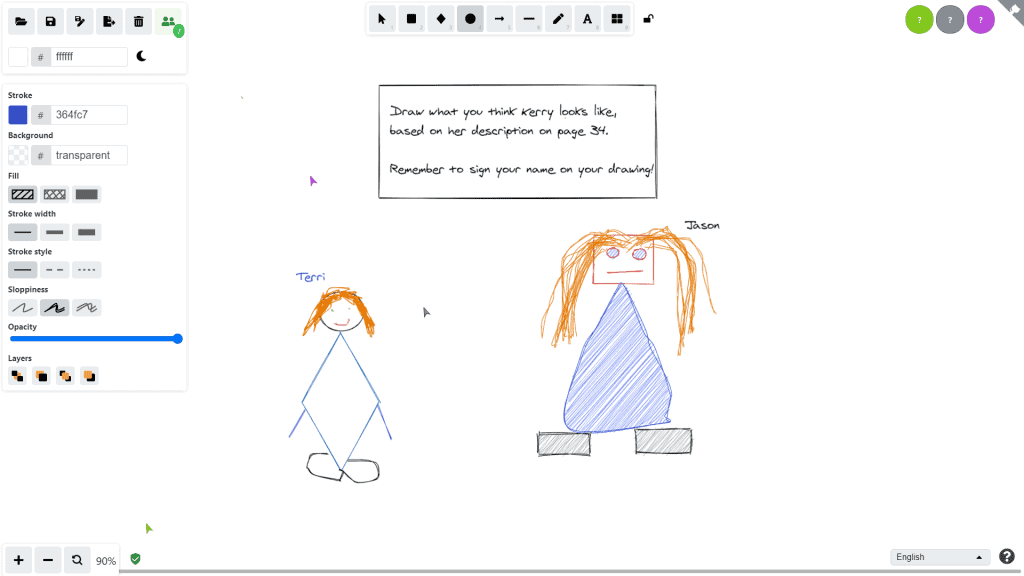
Ilo n-ro 2 – Veyon
Multaj instruistoj prave hezitas uzi ekranprograman programon en la virtuala klasĉambro. sed, Veyon ofertas multe pli ol tio.
Certe, Veyon permesas vin monitori ekranojn kaj ŝlosi studentojn ekster sesioj, sed ĝi ankaŭ donas al vi la povon regi ekranojn, kio signifas, ke vi povas helpi pri folioj de laboro kaj faru korektojn.
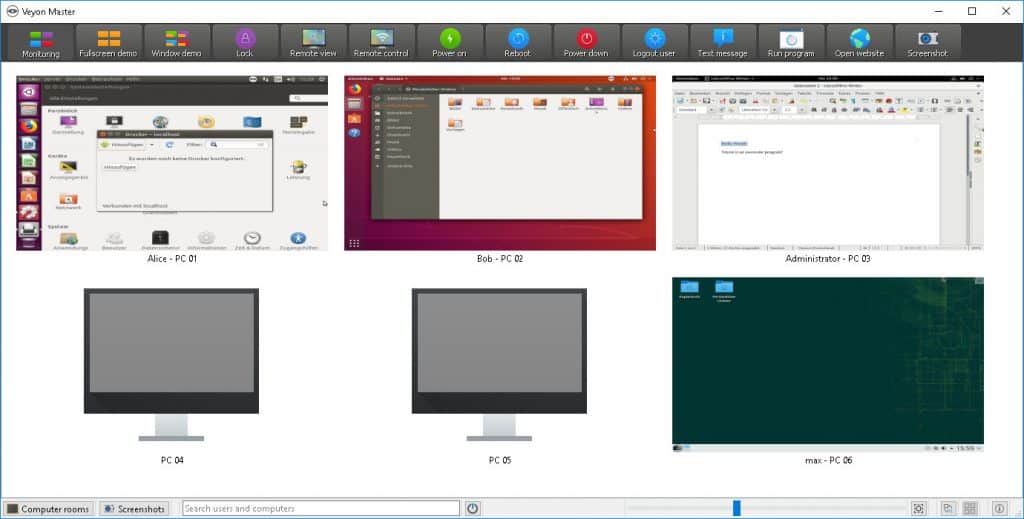
Ilo n-ro 3 – Flipgrid
Flipgrid temas pri konservado de aferoj sociaj en ĉi tiuj malproksimaj tempoj.
Ĝi estas senpaga ilo, kiu permesas al vi krei diskuttemon kaj dividi ĝin ekskluzive kun viaj studentoj. Poste, ĝi instigas studentojn filmi filmeton, en kiu ili povas paroli, plenumi or konstrui ion rilata al via temo.
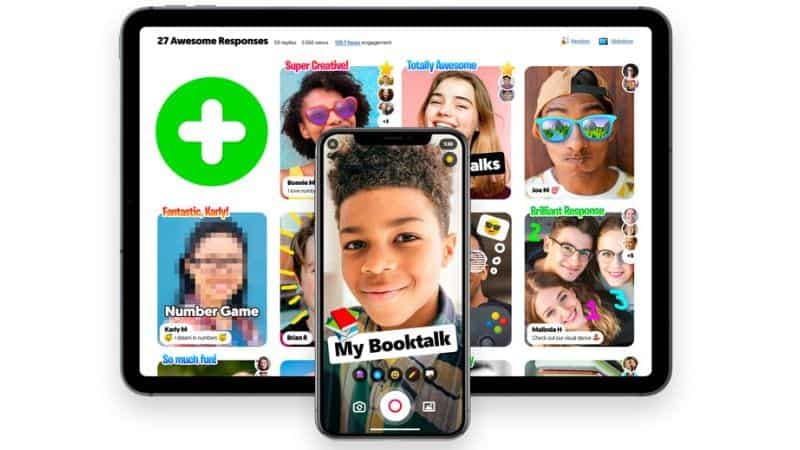
Ilo # 4: Konu la Enhavon X
Se vi ankoraŭ uzas unudirektajn prezentojn de Google Slides aŭ PowerPoint por viaj interretaj lecionoj, estas tempo akiri... interaktiva.
AhaSlides estas senpaga ilo, kiu permesas al studentoj respondi al viaj demandoj, voĉdoni en viaj voĉdonoj kaj ludi viajn kvizojn. kaj ludoj vivi de siaj telefonoj. Vi nur bezonas krei la prezenton, dividi la ĉambran kodon kun viaj studentoj kaj kune progresi tra ĝi.
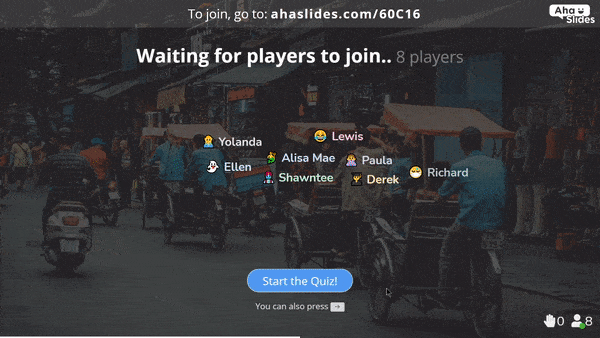
AhaSlides ankaŭ funkcias por nesinkrona lernado. Vi povas krei vian materialon, aldoni viajn voĉdonojn kaj demandojn, tiam lasi viajn studentojn kompletigi la kurson en la tempo, kiu konvenas al ili.
⭐ Ĉu vi volas provi ĝin? Registriĝu al AhaSlides senpage alklakante la suban butonon!
Ni esperas, ke ĉi tiu artikolo pri la avantaĝoj kaj malavantaĝoj de e-lernado helpis klarigi kelkajn el la avantaĝoj kaj malavantaĝoj de reta lernado. Ni esperas, ke ni montris al vi, iel eta, kelkajn metodojn, kiujn vi povas uzi por adapti vian instruadon al la cifereca sfero. Bonŝancon!
Pli da Engaĝiĝo kun viaj renkontiĝoj
- Plej bona rado de AhaSlides
- Kreinto de Interreta Kvizo de AI | Faru Kvizojn Vivajn | 2024 Rivelas
- AhaSlides Online Poll Maker ��� Best Survey Tool
- Hazarda Teama Generatoro | 2024 Hazarda Group Maker Reveals



